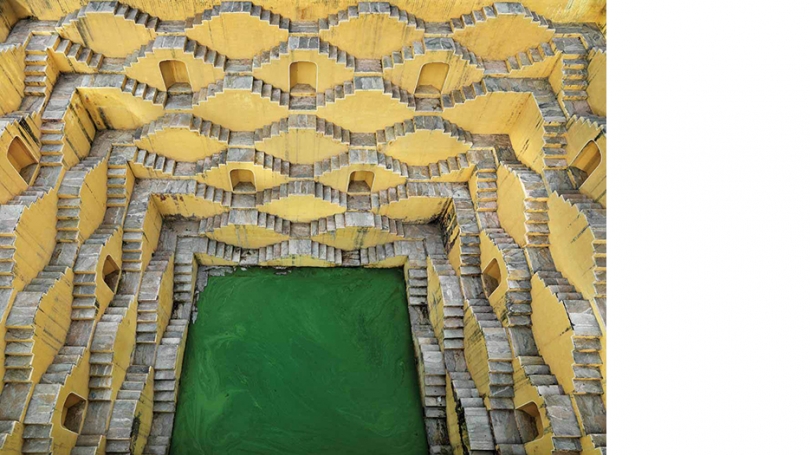The tension between visual punch and global industrial "documentation" is a signature of photographer Edward Burtynsky's work, and the Hood's recent acquisition is a stunning example of this. In this photograph, Burtynsky explores the interconnectedness between industrial progress, geological history, and social human history through images of the marks we leave upon the Earth as a result of all three.
The Panna Meena stepwell was possibly built in the sixteenth or seventeenth century as a place for community members to both obtain water and gather to socialize on its maze-like network of steps, shielded from the sun by the well's steep walls. Stepwells were a common part of a system to provide groundwater to people in areas with annually fluctuating water supplies. The architectural splendor of the stepwell points up the deep cultural relationship between people and water in India. Although the water is no longer potable, Panna Meena remains an important community gathering place.
Stepwell #2 is part of Burtynsky's largest and furthest-reaching project—titled Water—to date. Starting in 2008, he traveled to nine countries in pursuit of the idea of the human need for water, and what we will do to get it, employing techniques that were new to him, including aerial work from helicopters and the use of digital camera equipment. In the 2013 book published alongside these photographs, Burtynsky states, "While trying to accommodate the growing needs of an expanding, and very thirsty, civilization, we are reshaping the Earth in colossal ways . . . My hope is that these pictures will stimulate a process of thinking about something essential to our survival, something we often take for granted—until it's gone."
